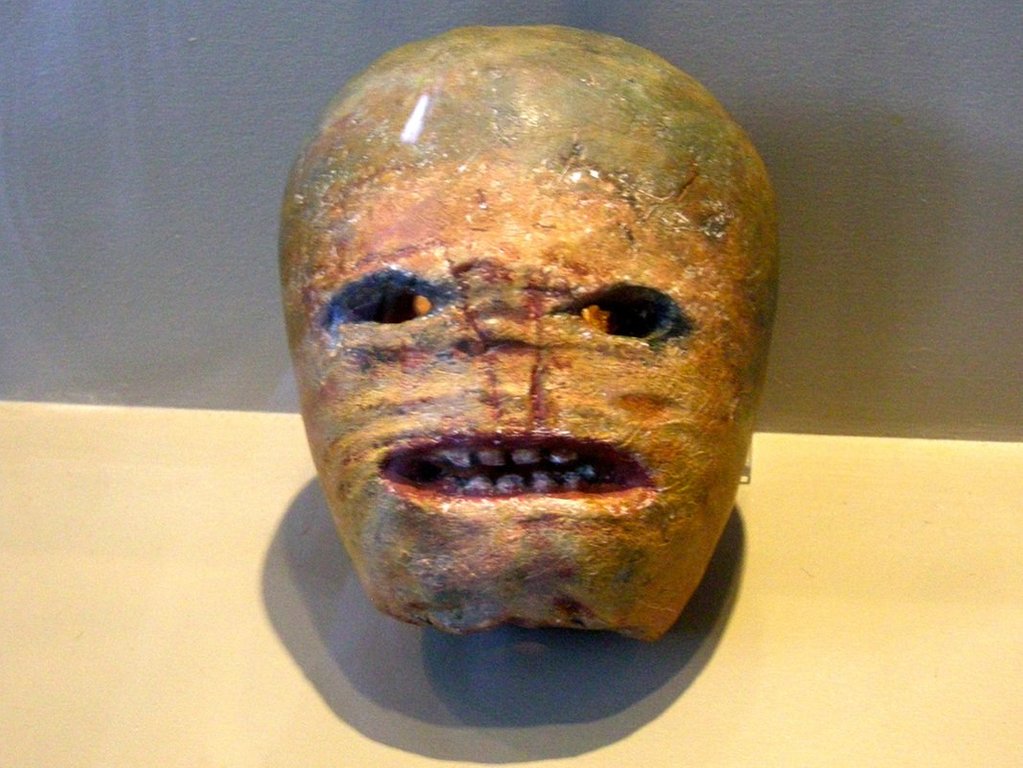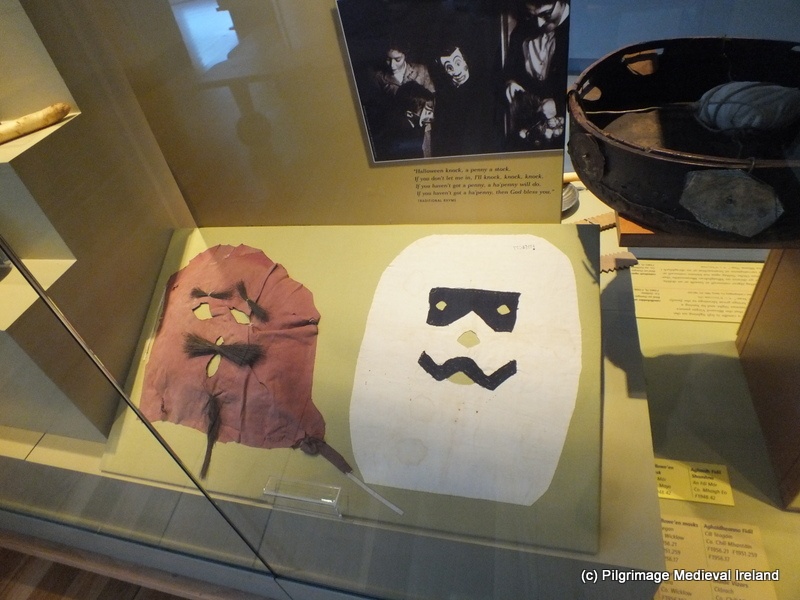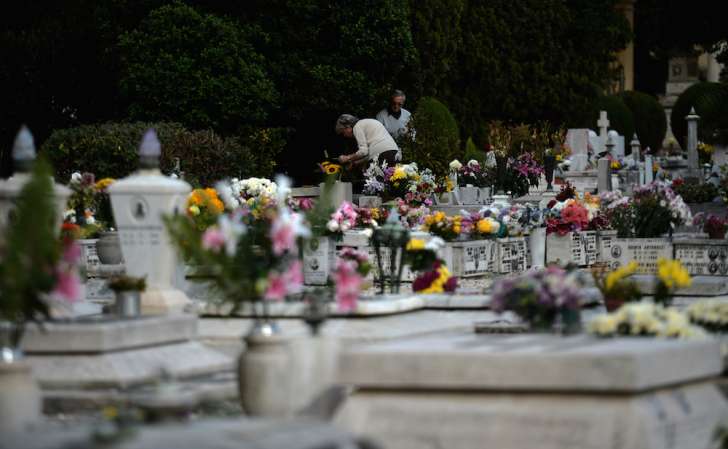
Halloween and The History of How 9 Rituals Came to Be
Something that’s hard to understand can be frightening, but exploring what scares us often leads to our most rewarding discoveries.
With that in mind, and given the opportunity, I wanted to take today’s slot on the blog to explore the traditions that we’ve grown to associate with Halloween. Given we write about events on this blog, it didn’t seem like too much of a stretch.
Here’s a quick index of what I’ve researched for us, in case any one in particular is a burning question for you:
1) Why do we do scary things at Halloween?
2) Why do we carve pumpkins?
3) Why do we light bonfires?
4) Why do we trick or treat?
5) Why do we dress up?
6) Why do we bob for apples?
7) Why do we set off fireworks?
8) Why do we eat so much sugar?
9) How do other cultures celebrate Halloween?
The Origin of The Creepies
Why do we do scary things at Halloween?
The first and most general thing I wondered about Halloween when I set about writing this piece was why we’ve decided it’s so spooky? Here’re some of the best answers I found:
The Celts were one of the earliest, most formative groups in ancient Ireland (as well as the Isle of Man, Brittany and Wales, but that’s a story for another time). They believed that the passage of a day began in darkness and progressed into the light; the opposite of our modern idea of days beginning in the morning at dawn. For them, winter – the season of long, dark nights – marked the beginning of the year, meaning that the 31st of October, what we now know as Halloween, was Celtic New Year’s Eve.
Therefore the 1st of November, or Samhain, marked the Celtic New Year. Celebrations and rituals – some of which we’ll talk about later on – began at sunset of the day before, i.e. the “Eve” of Samhain, or “All Hallows’ Eve”, in later cultures.
At that time of year, the seasons were changing to much harsher conditions that made it much harder to survive for our ancestors. Aside from the elements, they were also worried about sinister forces causing them bother.
Celts believed that this life and the next were at their closest at Halloween, meaning spirits found it easier to pass from their realm to ours. The havoc they supposedly caused for the Celts usually took the form of ruined crops. However, spirits were also thought to make druids’ predictions for the future more accurate. Given druids were the main source of wisdom for these groups, that eased people’s worries about the unpredictable, making them grateful and giving them reason to celebrate.
All that said, the beliefs surrounding the significance of the change in seasons might be even older than Celtic traditions. Historians have found that Irish sites such as the Mound of Hostages were also constructed in honour of the changing autumn light and are a good 2,500-3,000 years older than the anniversary of the arrival of Celts in Ireland.
Whatever your take on who can legitimately lay claim to being the first person to figure out that November is dark, it’s a truth that Halloween is weird and interesting, and this history gives us some clues as to why we keep our scary traditions.
As such, given both the authors and readers of this blog’s shared interest in events, I wanted to look into the origins of the traditions that make Halloween celebrations what they now as well.
Common F-A-Boos
Why do we carve pumpkins?
It turns out that we actually used to carve turnips.
By “we” I mean the ancient Irish, who’ve cropped up again as a verifiable source of all things Halloween.
The original Jack O’Lantern himself comes from their oral history. Poor Jack was cursed to walk the earth for all eternity and, to light his way, lit some coal and put it in a hollowed out turnip, according to Irish folklore.
One theory about the tradition of carving spooky faces into turnips and other gourds came from families’ traditions of putting the finished product in their windows to ward off spirits. And, given how they turned out, I assume they were effective:

Image Description: A carved turnip preserved and on display in the Museum of Country Life in Co. Mayo, Ireland.
As Irish people and their neighbours emigrated to the United States, they brought such traditions with them, but found that the US-native pumpkin was a significantly easier thing to carve. With that what we now recognise as a jack-o-lantern came to be.
Bonus fact: Neither pumpkins nor turnips are actually vegetables in the technical sense. They’re berries, because the uncertainty at this time of year extends to the foods we eat, apparently.
Why do we light bonfires?
The notion of lighting bonfires at Halloween came from the Pagan ritual of using the fires to keep good spirits on your side around Samhain. As well as the crop-ruining baddies we spoke about earlier in this post, the Celts believed there were good spirits who would protect them throughout the year, and that the light of the fires would guide them to their communities.
The bonfires were lit from kindling and offerings given by the community to young people who would collect them for the ceremonies that surrounded the festival. The word “bonfire” itself comes from the words “bones” and “fire” because bones of animals would be burned as an offering throughout. People would also burn personal items as a sacrifice to ward off misfortune and illness.

Nowadays, the public is more concerned about the dangers caused by bonfires, rather than what they protect against, but that certainly hasn’t put a stop to this spooky ritual.
Why do we trick or treat?
According to Smithsonian Magazine, this ritual stems from (you guessed it) a Celtic tradition, but it evolved alongside a time they describe as “when the Catholic Church was stealing everybody’s holidays.”
Around 1,000 A.D., in exchange for songs or prayers, children (and poorer adults) would go door-to-door requesting food or money. While that incarnation didn’t quite involve any tricks (that we know of), one interesting period of said trickery took place in 1930s America as a result of desperation caused by the Great Depression. Excessive pranks became commonplace at the time, including vandalism and looting, but the sugar shortages of the second world war soon curtailed the practice, ushering in more gloom than doom.
Why do we dress up?
The Celts also invented the tradition of wearing costumes. (Is there anything they couldn’t do?)
They had to be spooky enough to ward off evil spirits, but affordable enough to be a justifiable expense in an ancient economy. So, they made them from animal skins.
To add terrifying to spooky, the Irish also made masks called Fiddle Faces:

Fiddle Faces were worn by gangs of young boys who would visit farmhouses in early 20th century rural Ireland asking for money or food, and who weren’t afraid to cause mischief if they were badly received.
Why do we bob for apples?
Sorry to disappoint, but there’s no ritualistic significance here. There are just lots of apples around in autumn and, presumably, our ancestors were bored.
However, they are a compact alternative to other carvable fruits:

Image Description: A (very cute) carved apple.
Why do we set off fireworks?
Fireworks are heavily restricted where I come from, but it’s still a signal that we’re getting to spooky season when you hear one blow up in your neighbourhood. Usually, they’re smuggled from other countries where they are legal, but I was surprised to learn that the global hub of firework displays is usually thought to be Vancouver.
I don’t know about you, but my mental image of Vancouver always saw it as a pleasantly sleepy, chilly, tucked-in pocket of British Columbia. But then I heard about Halloween in ’63 where they all pelted eggs and oysters at each other. And then I heard about Halloween of ’52 when it was recommended that “Halloween be stopped” because of the ever increasing vandalism that occurred at that time of year.
Aside from the food fights of Dunbar and Chinatown, there were much darker hijinks, like children losing limbs and even eyes to faulty or misused fireworks. These devastating accidents lead to fireworks being banned in many towns in BC in 1964. However, this didn’t exactly stop the shenanigans it was supposed to; some 250,000,000 firecrackers were let off in British Columbia the following year. The ban was overturned in the late ’70s, allegedly because fireworks were seen as a Halloween tradition unique to Vancouver, and not the rest of Canada.
Now, while I acknowledge that that doesn’t quite explain why we light fireworks, it certainly tells us where.
With regards to how explosives and Halloween became partners, it seems to be a relatively modern phenomenon. For example, Disneyland only started having Halloween fireworks displays in the early 2000s, so perhaps this tradition isn’t quite as rich as it might seem.
Why do we eat so much sugar?
You’d be forgiven for thinking that “soul cake” was a jazz-funk album title rather than a baked good. However, soul cake is actually responsible for being the precursor to one of our most beloved Halloween traditions: eating our body weight in sweets.

Image Description: Children dressed in Halloween costumes playing at trying to eat hanging apples without using their hands.
Soul cake was a treat in the Middle Ages in Ireland and neighbouring countries. Half way between a biscuit and a scone, their recipe calls for spices and dried fruits that would have been rich rarities in those days. At Halloween in the 1,200s and beyond, poor folk would (again) offer prayers in exchange for the cakes. These were usually prayers for the benefit of richer people’s souls.
The practice evolved with unnaturally sweetened modern goods like candy corn in the 1880s, and brain-flavoured zombie mints in more recent times. Allegedly, in the early 20th century, “Big Candy” were looking for a way to boost autumnal candy sales in the US, and so they developed the idea of Candy Day in 1916 which was celebrated in the second week of October. Eventually, Halloween gained popularity, and they hopped on that haunted bandwagon instead.
How do other cultures celebrate Halloween?
A few of the traditions that follow aren’t strictly Halloween celebrations per se. However, many are celebrations of the lives and deaths of loved souls, and share other similarities with the Halloween traditions we’ve looked at throughout this post.
Italy‘s Ognissanti takes place on the 1st and 2nd of November and is a festival observed to commemorate loved ones who’ve passed away. Italian folks create a particularly mesmerising visual of chrysanthemums and other flowers that are placed on relatives graves, and even those of total strangers.
Another tradition mirrored during Ognissanti is its observers’ practice of placing a light in their windows to guide departed spirits home. Loved ones’ spirits are then said to leave greenbeans and confetti to show their younger relatives that they are still with them, and keeping an eye.

Image Description: Italians placing flowers on graves in observance of Ognissanti. Source: Mental Floss.
In China, Zhongyuan Festival takes place when heaven, hell, and the living realm are closest and easiest to pass through. However, unlike Celtic tradition, for those who celebrate it this festival takes place on the fifteenth day of the seventh month of the lunar calendar.
Rituals that take place throughout include one performed by Buddhists wherein sacrifices are made to the souls that join those in attendance. Animals and foods are placed on a sacrificial alter where a monk then places a triangular paper banner with special colours and lettering. The monk and other monks gathered there then rap a bell to summon the souls present, chant, and finally scatter plates of peaches and rice which are then distributed to the spirits.
As well as this, many tributes to ghosts and souls incorporating lanterns and incense as the primary symbols take place.
Lastly, in the Philippines, Pangangaluluwa sees familiar scenes to what we’d normally associate with Halloween. The festival sees groups of people going from door to door singing and asking for psalms and prayers.
Taking place on the 1st of November, these prayers are used to guide souls from purgatory to heaven. As well as this, people in the Philippines spend a lot of the day in cemeteries to spend time with their loved ones who’ve passed on.
With that, whether you spend it throwing oysters, peaches, or putting coal in turnips, from me and all at Team Tito, we sincerely hope you have a peaceful, or frightful Halloween, whatever your preference.
Note: This post was last updated for accuracy on October 24th, 2019.